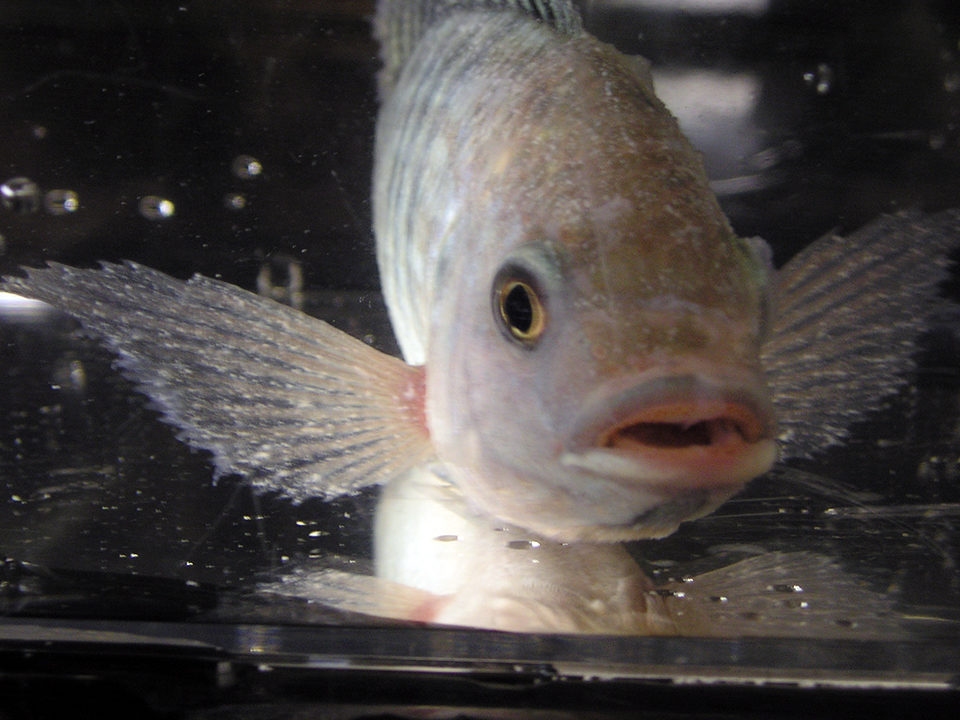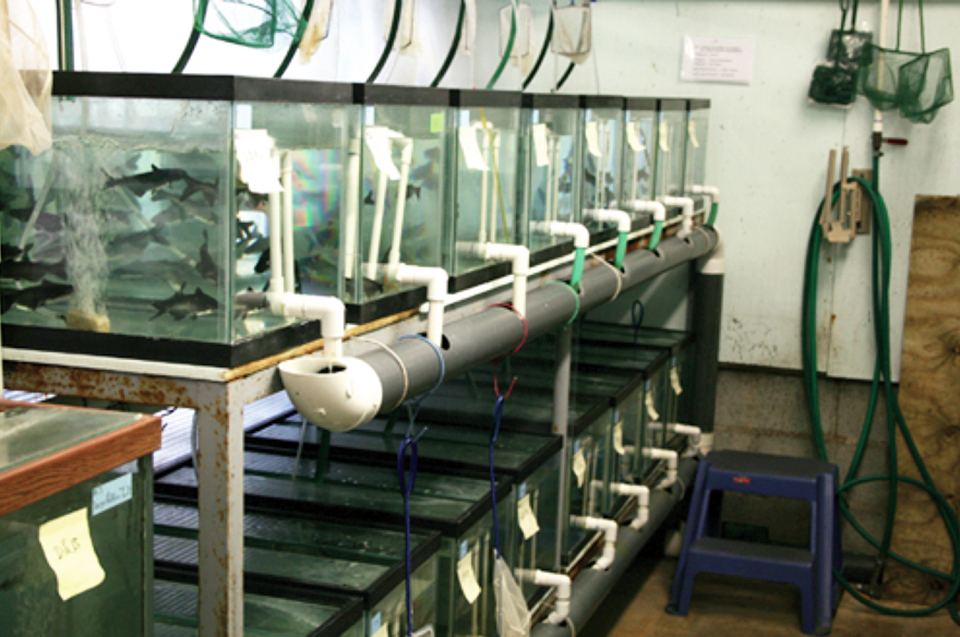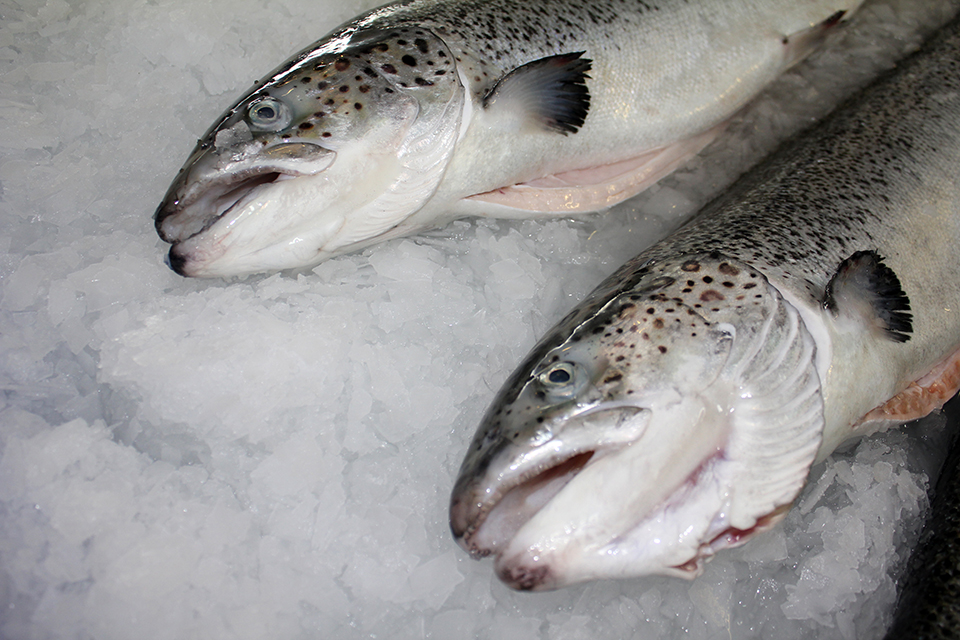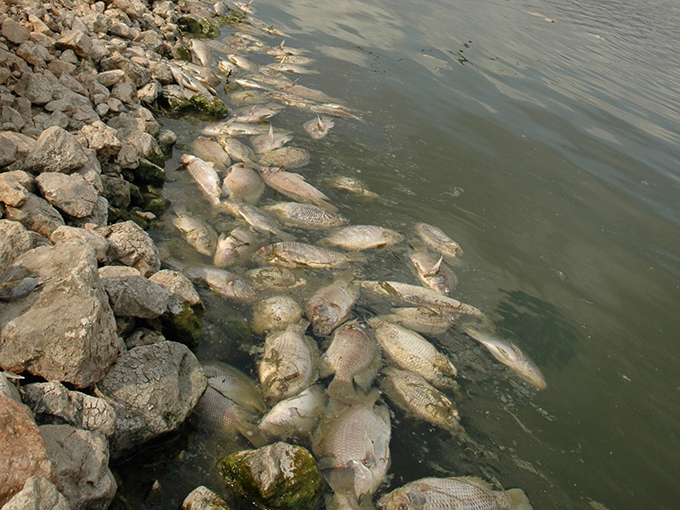Virulent parasite can affect tilapia and other freshwater fish

Tilapia are currently raised in production systems from ponds, tanks and cages to intensive water reuse culture systems. The ongoing intensification of tilapia culture requires the prevention and control of diseases since fish pathogens are easily transmitted from fish to fish. Some pathogens rapidly reproduce and can cause significant losses in a short time.
The ciliated protozoan Ichthyophthirius multifiliis (Ich), for example, is a virulent parasite that can affect tilapia and other freshwater fish. The life stages of Ich include an infective theront, a parasitic trophont and a reproductive tomont. Tilapia are most susceptible to Ich infestation when water temperatures are optimum for Ich development – 22 to 24 degrees-C.
Severe Ich infestations most commonly occur in dense populations of fish, especially in fry and juveniles in intensive recirculating systems. The infected fish show white spots on the skin that measure 0.3 to 1.0 mm in diameter.
Control of Ich
Currently, the control of Ich depends largely on the use of formalin, a United States Food and Drug Administration-approved drug for fish, but the chemical is not effective after the parasite penetrates into fish skin and gills. The chemical treatment is also costly, and has led to public concern for food and environmental safety.
Vaccination against the parasite is an alternative to chemical treatments, since fish that survive an Ich infection or are immunized with Ich antigens acquire immunity against the parasite.
Immunization study
Nile tilapia and red tilapia, an Oreochromis mossambicus × Oreochromis niloticus hybrid, are cultured in many areas. In a study, the authors compared the immune responses of Nile and red tilapia following immunization against Ich using a cohabitation challenge model.
Nile tilapia of 20-g and red tilapia of 18-gram average weight were divided into four immunization groups. Each group used three tanks that each held 15 Nile tilapia and 15 red tilapia. Fish in each group were immunized as follows:
- immersion at a dose of 20,000 live theronts/fish for one hour
- intraperitoneal (I.P.) injection at a dose of 20,000 live theronts/fish
- I.P. injection with 5 percent bovine serum albumin
- non-immunized control.
Blood samples were taken for six Nile and six red tilapia from each immunized group 14 and 28 days after immunization to determine anti-Ich antibody levels in their blood serum. The amount of antibodies in the blood serum was measured by an immobilization assay. Increasing dilutions of the antibodies determined the level at which the parasite theronts would cease swimming and aggregate into theront masses.
Immune response
No anti-Ich antibody was detected in non-immunized fish and fish injected with bovine serum albumin (Table 1). When serums from both Nile and red tilapia in these two groups were added to theronts, the theronts swam freely in water. The tilapia immunized with live theronts increased anti-Ich antibody levels 14 days after immunization. When serums from the immunized fish were added to theronts, the theronts ceased swimming and aggregated into masses of 10 to 50 theronts.
Xu, Mean immobilization titer of anti-Ichthyophthirius antibodies, Table 1
| Immune Group | Day | Nile Tilapia | Red Tilapia |
|---|
Immune Group | Day | Nile Tilapia | Red Tilapia |
|---|---|---|---|
| Theront immersion | 14 | 133 | 233 |
| Theront I.P. immersion | 14 | 2,080 | 2,266 |
| Bovine serum albumin I.P. injection | 14 | 0 | 0 |
| Non-immunized control | 14 | 0 | 0 |
| Theront immersion | 28 | 267 | 200 |
| Theront I.P. injection | 28 | 3,200 | 2,560 |
| Bovine serum albumin I.P. injection | 28 | 0 | 0 |
| Non-immunized control | 28 | 0 | 0 |
Fish immunized with live theronts by I.P. injection showed more anti-Ich antibodies than fish immunized by theront immersion in this trial. No difference in anti-Ich antibody levels in serum was noted between Nile and red tilapia when experimental data were analyzed with statistical analysis software.
Immune protection
Acquired immune protection against the parasite Ich is well recognized in freshwater fish such as channel catfish, rainbow trout, carp and some ornamental fish. The surface of the parasite Ich has membrane proteins, usually referred to as immobilization antigens, which can induce fish to develop immune protection against the parasite.
Fish usually develop strong immune protection when immunized by exposure to live theronts by immersion or injection. Other methods, such as immersion in sonicated parasite and injection by sonicated parasite, provide only partial protection. The study showed that immunization with live theronts by immersion or injection resulted in the production of high concentrations of anti-Ich antibodies in Nile tilapia and red tilapia.
The anti-Ich antibodies from immune fish formed a barrier to re-infection and prevented the parasites from penetrating the fish skin. Previous studies demonstrated that anti-Ich antibodies protected fish by expelling the invaded theronts from the host. The anti-Ich antibodies protected not only the immune fish themselves, but also other non-immune fish.
In previous studies, the authors noted that immune fish secreted anti-Ich antibodies into the water. The antibody concentrations were higher in water with more immune fish than water with fewer immune fish. When theronts were exposed to low concentrations of anti-Ich antibodies, they had a weak immobilization and could resume normal swimming.
Low concentrations of antibodies may weaken theronts and reduce their chance of invasion. However, high concentrations of antibodies or long exposure to antibodies may cause theronts to lose their infectivity and even die.
(Editor’s Note: This article was originally published in the July/August 2010 print edition of the Global Aquaculture Advocate.)
Now that you've reached the end of the article ...
… please consider supporting GSA’s mission to advance responsible seafood practices through education, advocacy and third-party assurances. The Advocate aims to document the evolution of responsible seafood practices and share the expansive knowledge of our vast network of contributors.
By becoming a Global Seafood Alliance member, you’re ensuring that all of the pre-competitive work we do through member benefits, resources and events can continue. Individual membership costs just $50 a year.
Not a GSA member? Join us.
Authors
-
De-Hai Xu, Ph.D.
USDA Agricultural Research Service
Aquatic Animal Health Research Laboratory
990 Wire Road
Auburn, Alabama 36832 USA -
Phillip Klesius, Ph.D.
USDA Agricultural Research Service
Aquatic Animal Health Research Laboratory
990 Wire Road
Auburn, Alabama 36832 USA
Tagged With
Related Posts

Innovation & Investment
Blue food solutions
Although state-of-the-art research has led to breakthroughs in cost efficiency, productivity and sustainability, further advances will be needed to support expansion of the industry to meet growing seafood demand. The North Atlantic Seafood Forum identified challenges and proposed solutions for varied issues.

Health & Welfare
Hybrid, channel catfish show similar immune responses to ich parasite
In a study, the authors evaluated the immune responses and host protection of hybrid catfish and channel catfish against the ich parasite (Ichthyophthirius multifiliis).

Health & Welfare
Oral vaccine delivery effective in reducing salmon diseases
Oral vaccination can be done with virtually all fish sizes and is a relatively stress-free and inexpensive approach. The authors developed a novel oral vaccine delivery system that was found effective against infectious salmon anemia and salmonid rickettsial septicemia at salmon farms in Chile.

Health & Welfare
Sizing up TiLV and its potential impact on tilapia production
An international research effort has commenced to find a solution for Tilapia Lake Virus (TiLV), a contagion causing high rates of mortality in farmed and wild tilapia stocks in Israel, Colombia, Ecuador, Egypt and Thailand.


